
Building backlinks can feel a lot like running on a treadmill.
You're constantly moving forward but not really getting anywhere.
But that's only if you're doing it wrong.
It's difficult to perfect the delicate art of link building. For the majority of websites and blogs, it may be an area that they never succeed in.
Even so, backlinks are a necessary—and in fact, a very attainable—component of your website and SEO strategy.
Here, I'm going to take you through all components of your website and SEO strategy and how you can feasibly secure them. I'll also give you some examples of backlinks you should be avoiding.
As with everything in SEO, where there's a good way of doing things, there's also a bad.
It's the same with backlinks. You need to be able to tell the difference if you want to make the greatest possible (positive) impact on your site.
Backlinks: A Quick Refresher
So, why are backlinks so important anyway?
It all has to do with how Google and other search engines understand and rank your website. The more good links you have pointing to your site, the more you're seen as an authoritative and reputable source, and the higher up the rankings you go.
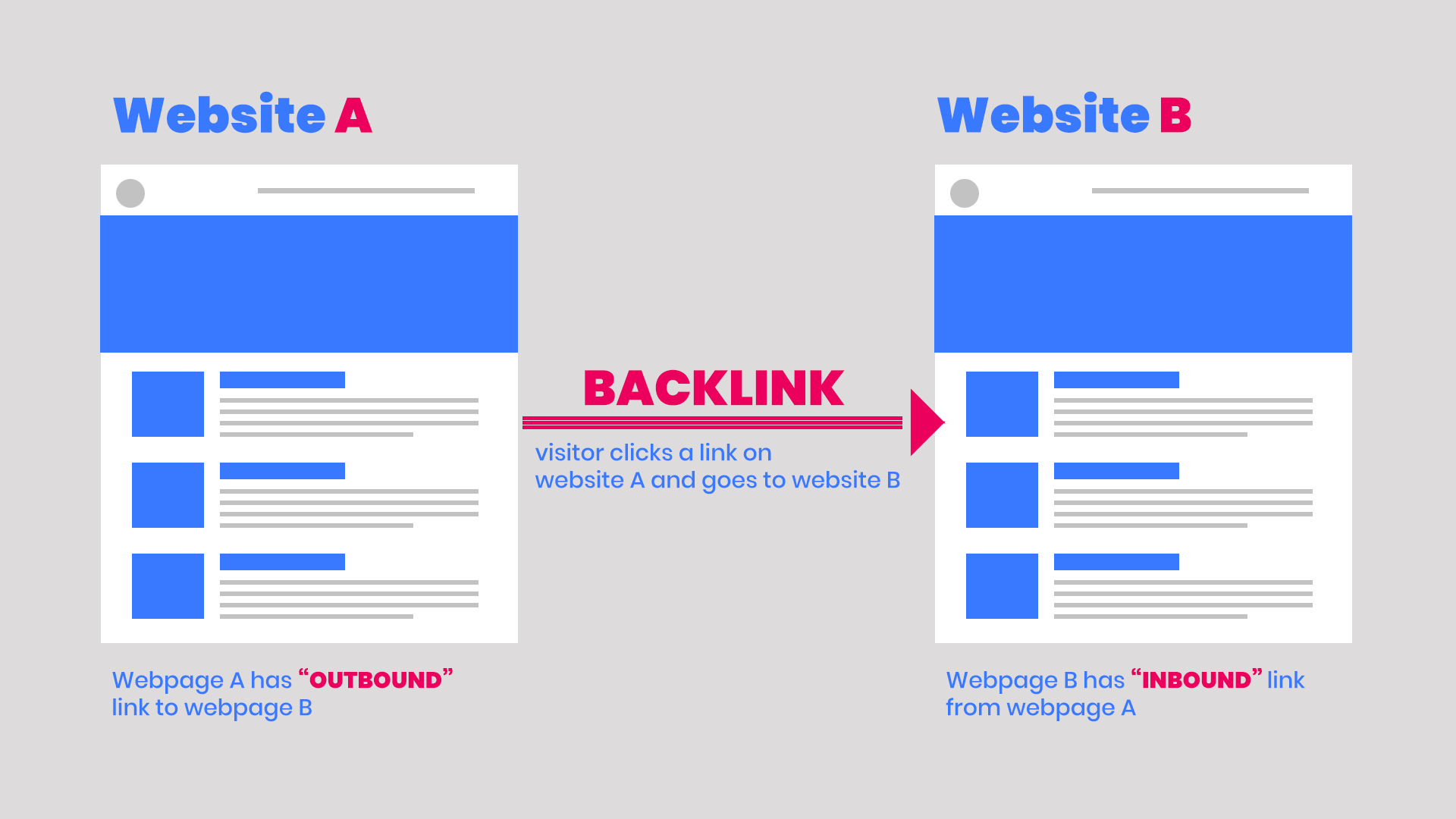
Image source: SidePing
Of course, it's not quite as simple as it sounds.
Getting links in this modern age is no easy task. The majority of webmasters know the value of backlinks. They almost definitely won't hand one over easily. They'll most likely want something in return. It requires a lot of time, strategy and effort. Not to mention, it will result in a lot of dead ends.
How to Set Backlink Goals
Despite the complexities of link building, it's far from impossible. You just need to be realistic with your goals. For example, chasing a link from a well-known industry leader like the New York Times to your small business? That's an unrealistic goal.
Once you've got a good, consistent strategy going, things get easier. Those links will start rolling in and you'll start reaping the benefits.
Backlink Quality vs. Quantity
It's very easy to get caught up in this idea of getting backlinks, as many backlinks as possible.
The more, the better, right? Well, not necessarily.
Search engines value the quality of your link profile over the quantity of backlinks you have. Google in particular favors balanced and diverse backlink profiles that are built naturally. So, having hundreds or thousands of unrelated, low-authority or spammy links will negatively impact your website.
You'll be penalized with a big drop in your rankings.
The quantity-over-quality strategy is very outdated. It's even considered unethical these days. Google sees it as an attempt at getting around their quality guidelines.
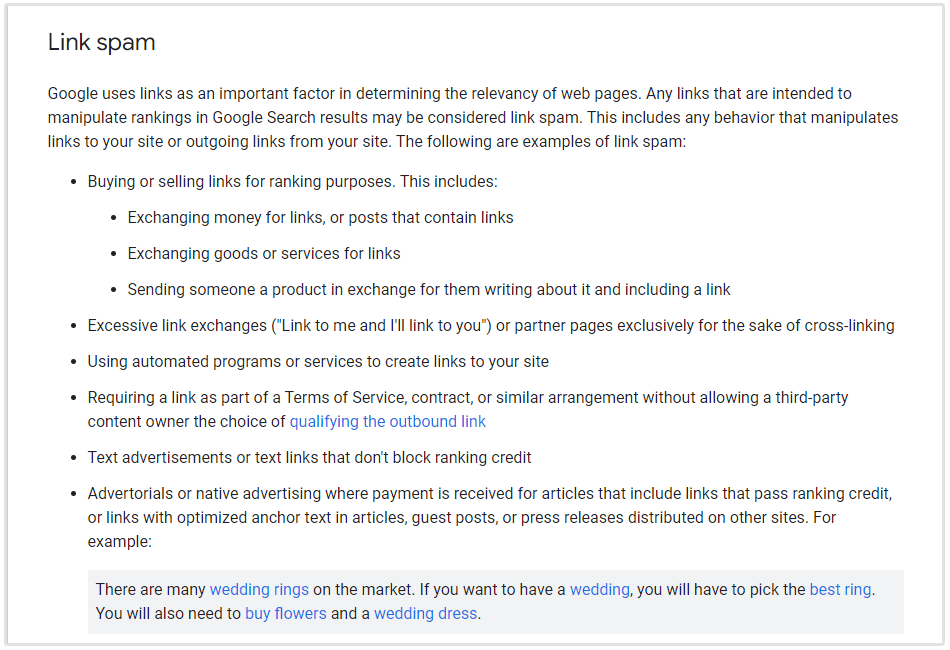
Since it's an artificial way of boosting your site's strength, Google will hit you with a penalty that will be very hard to come back from.
If you're in the mindset that more links is better than good links, you need to turn your strategy on its head quickly.
Link Building vs. Link Earning
Link building is on its way to being completely replaced by link earning.
It's not about the process of manually building tons of low-quality links anymore. SEO is becoming more and more about earning links through a value exchange.
Savvy website owners will rarely give out links for free these days. A good backlink is valuable and they know it. To get a valuable link, you have to give something in return for it. Usually, this is content of some sort, a discount or a giveaway.
In short, you have to earn it.
Now, there are a lot of ways that you can do this. I'll go into these more a little later. Just keep in mind that Google is only getting smarter and smarter. It's placing a much higher value on earned links over built links. This value is likely only going to continue to grow as link building gets more and more complex.
Good Backlinks vs. Bad Backlinks
There's a clear distinction between good and bad backlinks. Like I mentioned earlier, it's important to be able to tell the difference between them.
It's quite simple. Good backlinks have a high domain authority and are highly relevant to your business and website. Bad backlinks are low-quality, spammy and have no relevance to what you do.
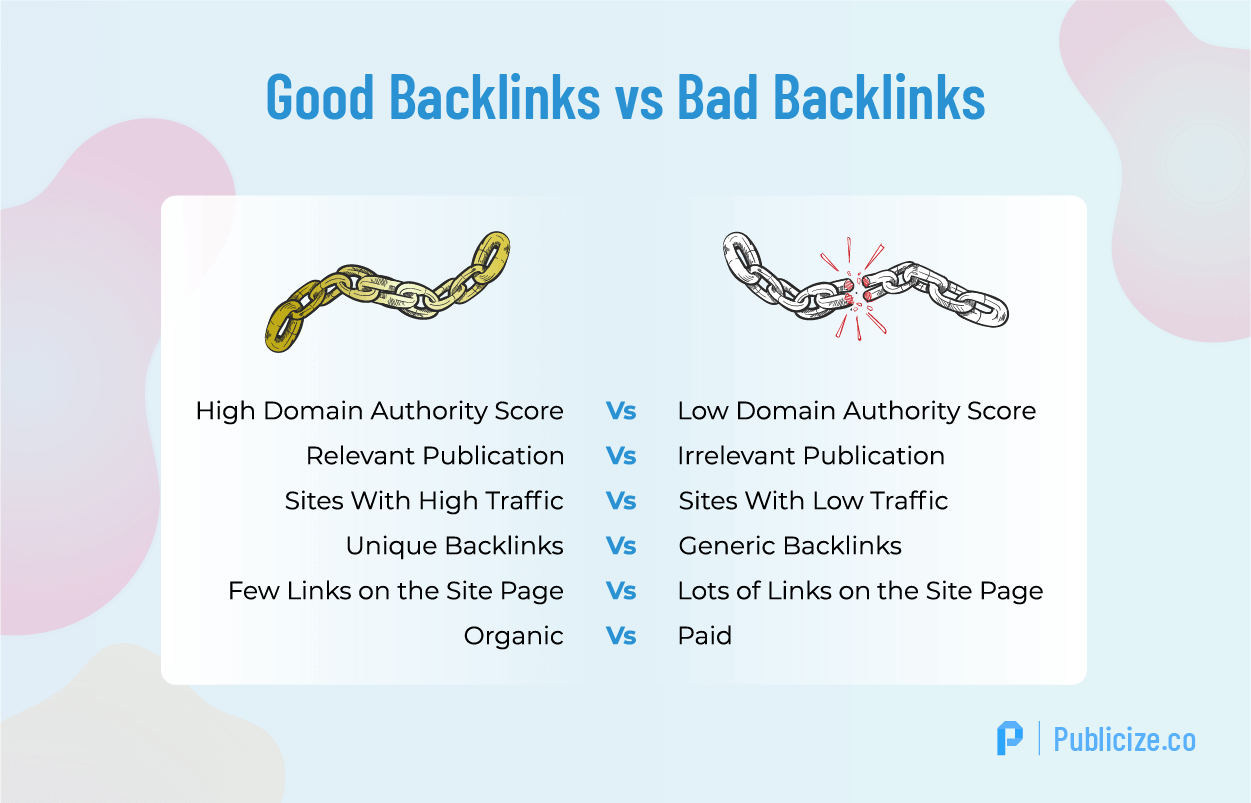
Image source: Publicize
Of course, this description is all very black and white. In reality, there's a lot of middle ground. You'll always have some bad links—it's unavoidable. Google is smart enough to understand this. As long as your backlink strategy focuses on earning good, high-authority links, then ultimately you'll be rewarded for it. Google knows that it's practically impossible to have a perfect link profile, and so it rewards link profiles that are natural and diverse.
SEO is already complicated, I know. It's on its way to becoming more complicated, too. For this reason, black hat SEOs are getting better at making bad backlinks look legit.
However, remember that search engines will always catch on sooner or later. Even if these dubious sites aren't hit with a penalty right away, it will happen eventually.
What Does a Backlink Look Like?
Now, we move onto the practical side of things. We'll see what a backlink actually looks like. We'll look at solid examples, too.
Simply put, backlinks are links on other websites that link back to your website. It doesn't matter whether they link back to your homepage or to a more targeted entry page. The important thing is that it leads to your site.
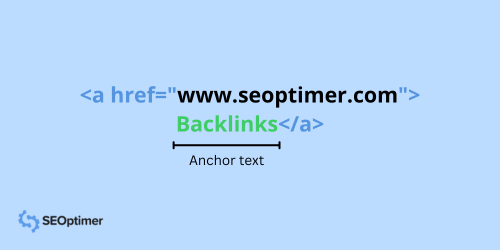
A backlink can take many forms. So, you'll have the opportunity to get creative with your backlink strategy. You can develop really valuable content that's worth linking to in interesting ways.
The Different Forms of Backlinks
Forms of backlinks include:
- An image, banner or badge — Websites can display your logo, a personalized banner or other attractive imagery that links to your website when clicked. You could even create a customized image for the linking website to use as part of your value exchange.
- Hyperlinked text — A word or phrase in a piece of content that links back to your site, like this. For hyperlinks to work, you ideally want the anchor text (the text where the link is embedded) to be more descriptive than "like this." It could be the name of your business (for example: SEOptimer) or a relevant phrase (for example: the best SEO audit tool).
It also needs to come across naturally in the content. The hyperlink should be used in a place that makes sense, where a reader would legitimately be interested to learn more.
- A URL — The actual web address of your website is displayed, also acting as a link. Like this: https://seoptimer.com/blog/. URLs are difficult to place naturally. They also tend to look more unpolished.
I would recommend using hyperlinks instead, wherever possible. Anywhere that a URL could be used, a hyperlink within the name of your website or a related keyword phrase could also be used. Plus, a website name or phrase looks much tidier and gives readers a clearer idea of where the link is sending them.
- Embedded in a video — If you can create a video that people will want to share and link to, you can embed a link to your site in that video which counts as a backlink.
Video is an extremely popular and shareable form of content. If you have the resources and budget to create a high-quality, compelling video, as well as the marketing chops to get it out there, it's a great link format to explore.
- Embedded in an infographic — Infographics have the same visual appeal as video. They just don't require as many resources to create. For infographics to work through linking and shareability, they need to be informative and interesting.
Being fun or unusual will usually help, too. You'll need to think outside the box to offer an infographic as your value exchange. It will need to be something new and exciting that their audience will love.
And now we come to the good stuff.
First up, examples of all the backlinks you should be pursuing for your website and how to secure them.
In the next section, examples of backlinks you should be avoiding.
Good Backlinks
1. Local Listings and Directories
These backlinks are what I like to refer to as low hanging fruit.
They're the easiest backlinks to score. They're the first ones you should go about securing because they're pretty much guaranteed.
It's a simple but somewhat tedious process—you need to go through all the high-authority local directories and either create new business listings or make sure your existing listing is up to date with your correct information. That's business name, address, contact details and—yep, you got it—a link back to your website.
It's a nice, easy, guaranteed backlink.
Start with a place like Google My Business. This is the listing that shows up for your business when people search for it in Google.
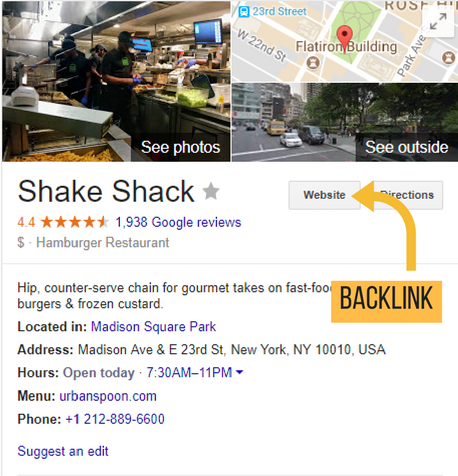
Believe it or not, Yellow Pages is still around. It's today's digital equivalent of that big, heavy phonebook.

Then there's Yelp and other business review directories.
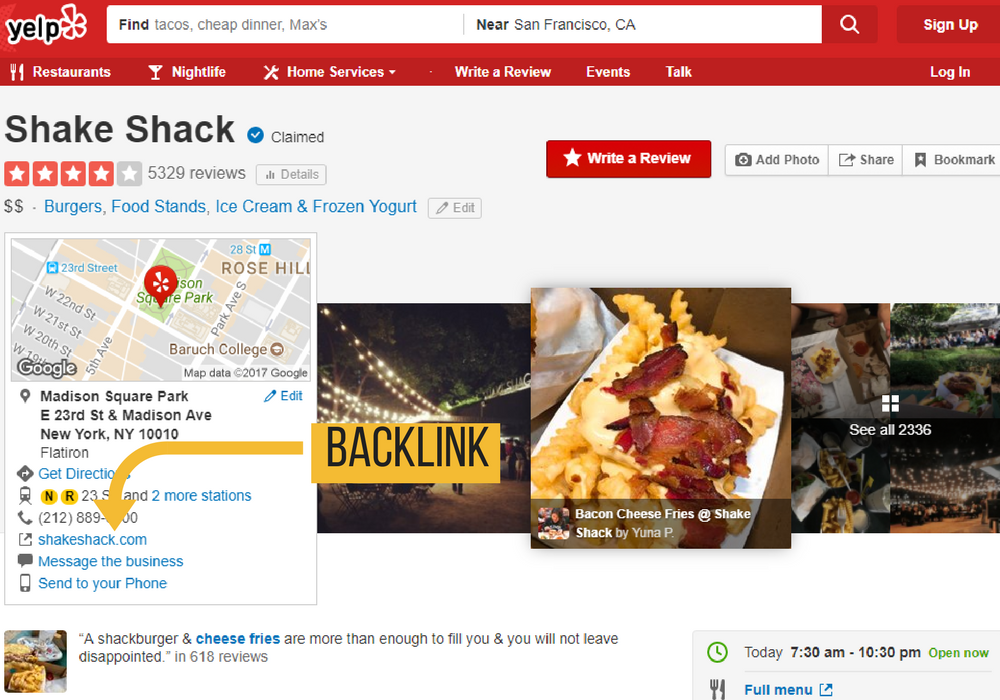
And don't forget about your social media profile pages!
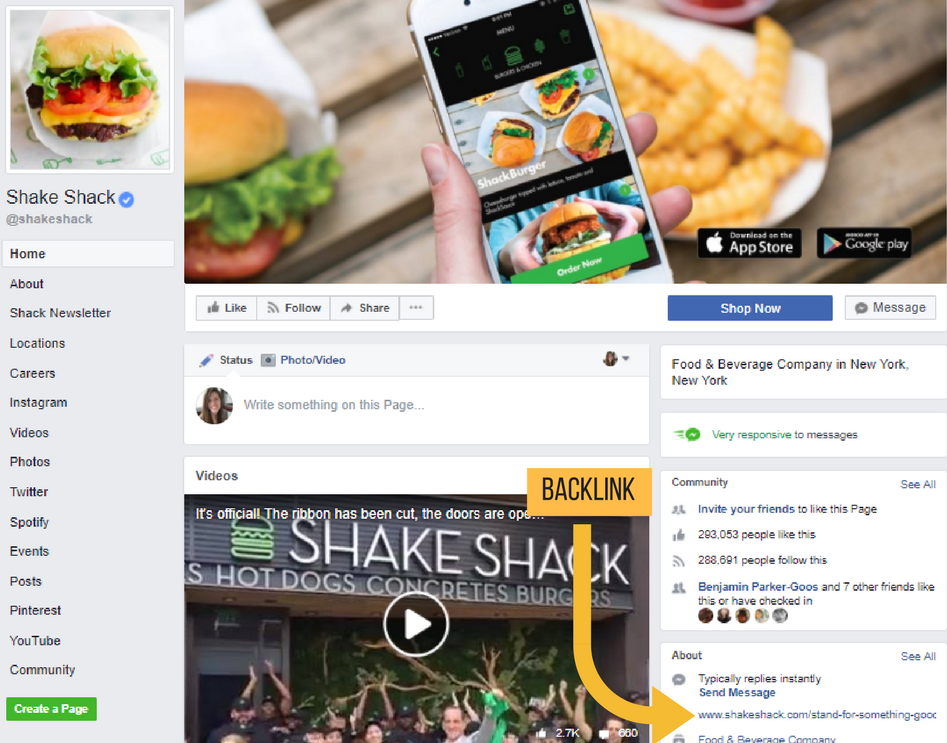
Depending on where you are in the world, your local directories will vary. Start small, by neighborhood or city.
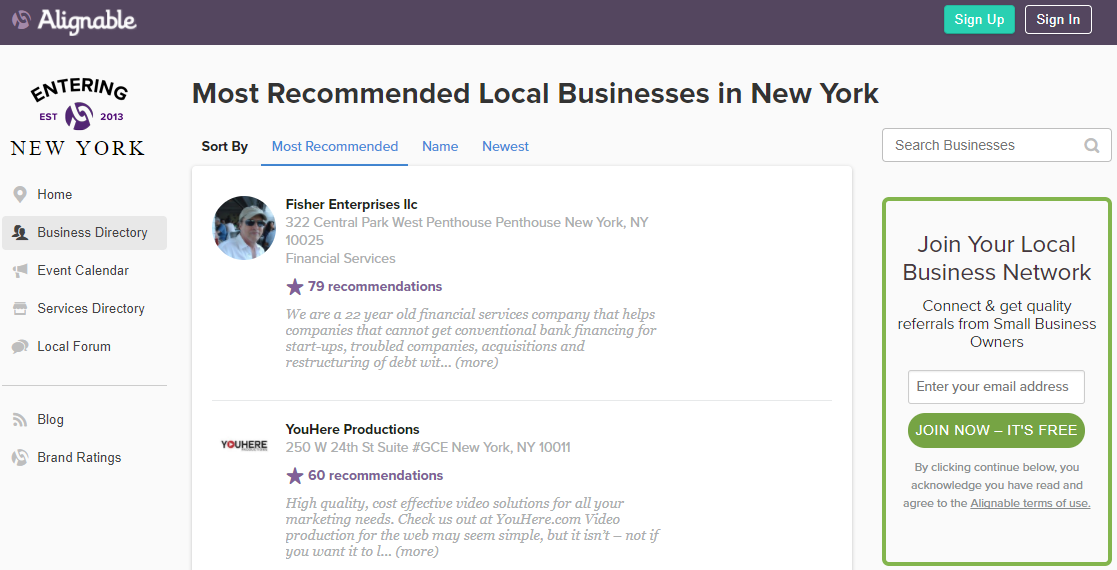
Then move into state and national directories relevant to your business.
Most directories will have different submission processes and listing allowances as well. Some may ask you to write a description of your business to go with the listing. Others only display basic contact details and a link.
Something to remember here: When you're writing descriptions for business listings, make sure you're not copying and pasting across every directory. This can count as duplicated content and negatively impact your SEO. So, you'll need to put in the effort to write unique descriptions for each listing.
These directory backlinks are a standard first step for every website, no matter your niche. They work twofold: Not only do they send link juice back to your website, but they also make it easier for new customers to find you.
2. Industry-Specific Directories
Once you've got your business showing up in all the general directories for your local and wider area, then it's time to move onto directories that are more industry-specific. These will obviously vary between industries and may be local, national or even international.
The important thing to remember here is to carefully assess the relevance of each directory to your website. Make sure it's a highly relevant site, focused on your topics.
For example, if you're in the marketing and digital space, you should be looking at listing your website in directories like the AMA Marketing Resource Directory:
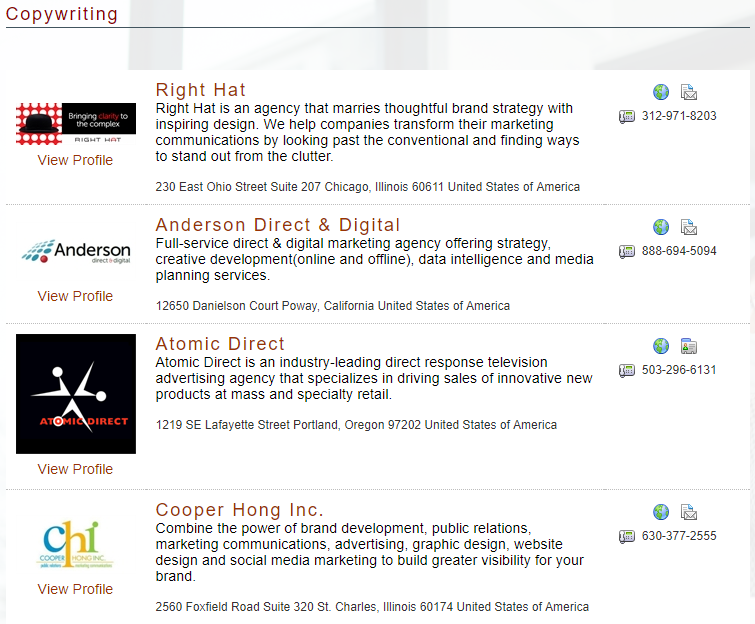
Other similar options include the Direct Marketing Directory and the Content Marketing Institute Business Directory.
If you're a B2B business, you should definitely be getting listed in the B2B Marketing Directory.
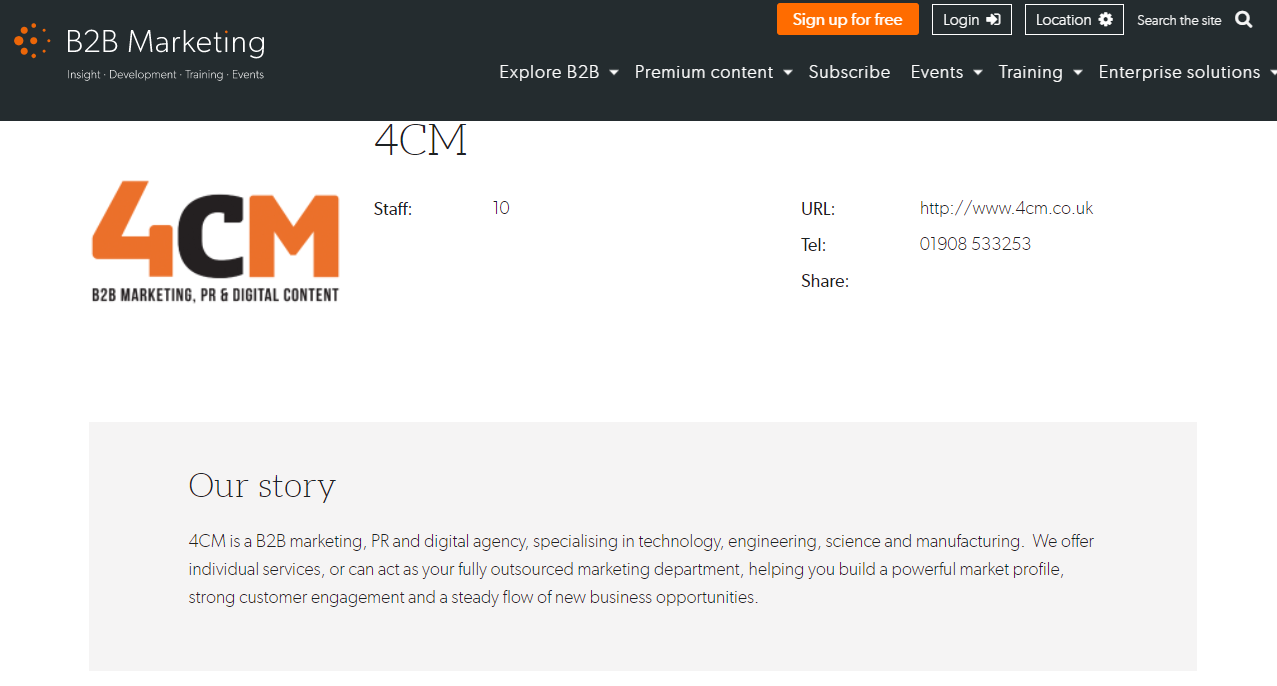
And this is just a handful for just one industry—there are hundreds of thousands of industry directories out there that you could be taking advantage of.
Just make sure you don't go submitting a link to every single directory you find. Just like with backlinks, there are high-quality and low-quality directories. You'll need to make the effort to analyze domain authority, relevance and audience.
To check the domain authority, a quick trip to the Monitor Backlinks Free Backlink Checker should do the trick. This will show you the chosen directory's Citation Flow, Trust Flow and other key information.
For example, if we check the B2B Marketing Directory with this tool, we see that it looks well established, with good Citation Flow and Trust Flow scores:
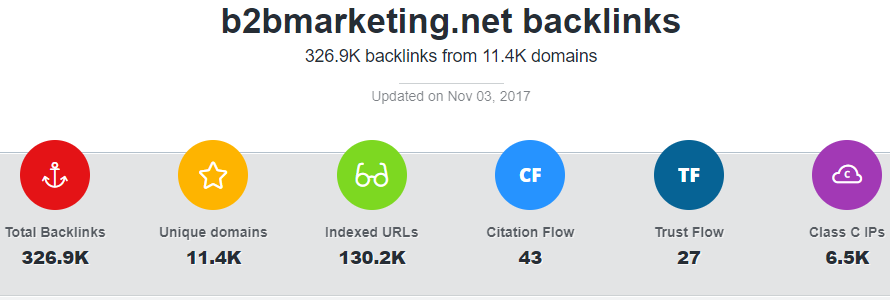
Once you've found some quality directories, you'll notice that the submission process varies between them.
When your link is approved, your business will have a public listing in that directory. This will include all of your contact information, a link to your website and perhaps a short description of who you are and what you do.
3. Existing Relationships
With all the directories done and dusted, it's time to move into more complex link building and outreach tactics.
It's not just a case of submitting a link to a listing anymore. Now it's about utilizing relationships and offering an exchange of value.
A great place to start is by considering your existing relationships with partners, clients, suppliers, distributors and so on. Determine if any of them would have a good link opportunity for you. If they have a decent website and a good relationship with you, that's a great person to reach out to.
Reach out by offering them something of value in exchange for their backlink. For example, this might be a customer success story, testimonial or review (a glowing one, of course!) that they can put up on their website. Since you already are familiar with their product or service, you can bring your experience to the content.
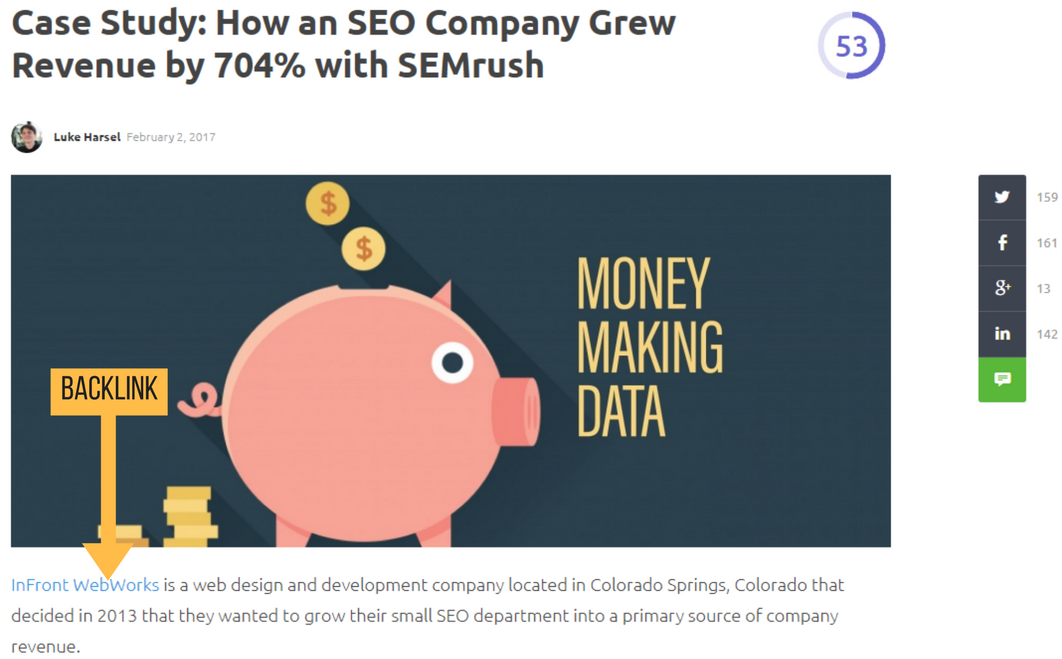
Where does the backlink come in? In these cases, the site will usually allow you to include your name and/or business name, along with a backlink, in the content or author bio.
A hyperlink or small clickable business logo usually works best for this type of content. You want the link to be subtle so the actual review can shine.
With a value exchange like this—that is, a link in return for a recommendation or review—you're much more likely to secure the links you go after.
Of course, reviews and testimonials won't work for every business, so you may need to get creative with how you present your offer. Perhaps a badge on their website showing them as a trusted supplier, or a banner image leading to an exclusive discount for their users. Whatever it is, remember to tailor your offer to the business you're reaching out to as well as their audience.
4. Guest Posting
Yes, it's a lot of work.
But guest posting can work very well when done right.
It involves a lot of research into relevant industry blogs, businesses and influencers. Then you'll need to find opportunities where you can offer a guest blog for someone to post on their website.
The value exchange in this backlink example is your content for a link—usually hyperlinked within your name or business name. Alternatively, the backlink might be placed in an opener or closer, or somewhere that flows naturally within the article.
The SEO gods at Moz are well-known for accepting guest posts by industry experts—check out the hyperlinked author bio at the bottom of this post.
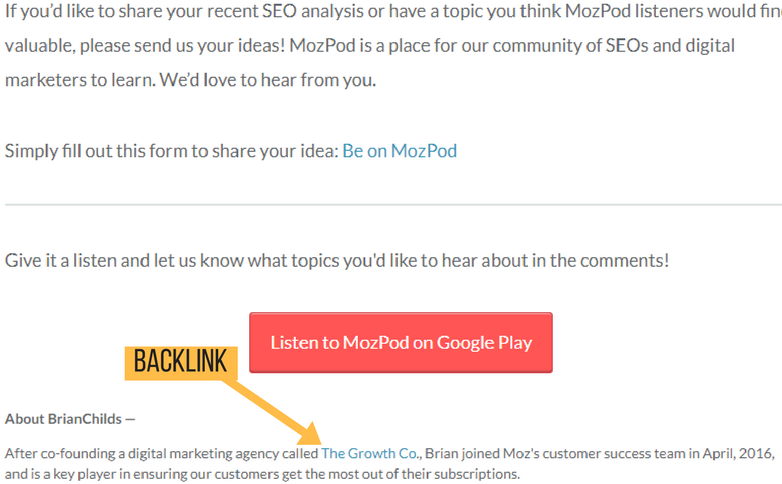
This Moz guest poster even got a link to their business within the text. Lucky dog.
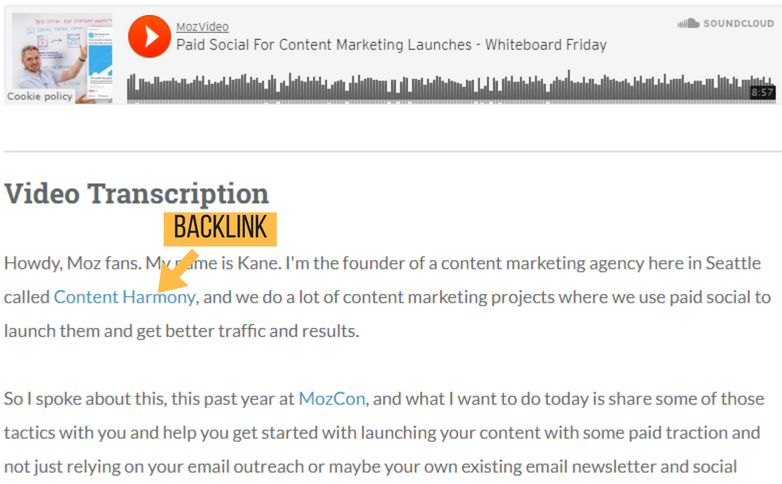
Now, if you want people to accept your post when they're likely to not know much about you—or more likely when they've never even heard of you—you need to be offering them something amazing.
Offer something well-written, insightful and perfectly tailored to their audience. You'll have a much greater chance of success if you reach out with a post that you've already written specifically for them, but sometimes a well-thought-out post idea (or several) could be enough to pique their interest.
Plus, guest posting works both ways.
If you have a blog on your website, consider inviting other businesses and bloggers to guest post on your site. It'll expand your network, and they're likely to share what they write on their own website or social media. And, voila! That's another backlink for you.
5. News and Press Releases
This method definitely won't work for everyone, but for some industries, news and press releases can be very effective.
For one, if you're going to release media about something your business has done or is doing, it needs to be something newsworthy.
Partnered with a well-known global supplier to expand overseas? Sure. Sponsoring a popular charity event? Maybe, if released to the right channels. Hired a new staff member? Probably not (unless they're a celebrity or royalty).
You need to understand what makes something newsworthy to a wider audience, not just to your business.
For some organizations, it could be worthwhile enlisting the services of a PR agency to help you properly develop your brand and release it to the media in a controlled way.
If you're going at it alone and want to put out a press release or article, first look at industry news outlets and magazines, PR sites and smaller, local news organizations.
You may be surprised at how willing they are to accept an interesting story.
These sorts of news websites generally have high domain authorities and are great additions to your backlink profile.
Just keep in mind that some may not want to hyperlink to your business within the body of the article itself. You may need to request a hyperlinked byline or reference list. This recent press release, for example, features hyperlinks within the text.
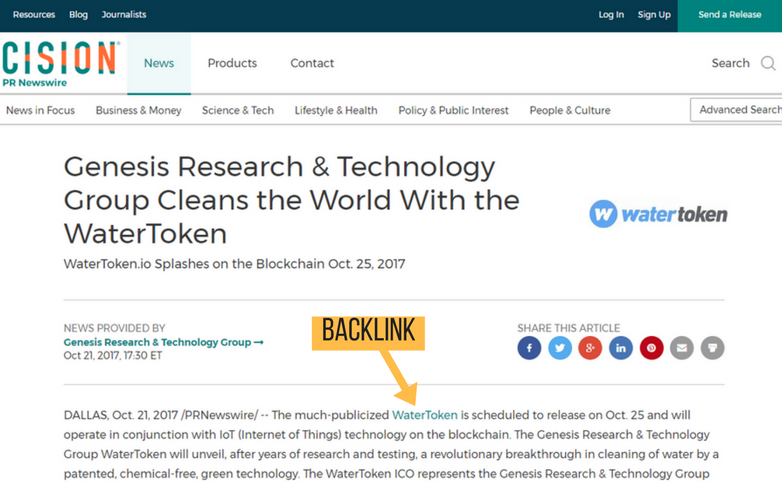
On the other hand, this one shows the full URLs as a sort of reference list at the bottom of the content.
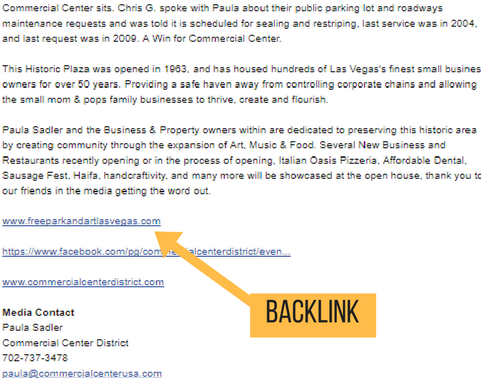
6. Rich Content
"Rich content" isn't a technical term.It's what I've started calling a very distinct type of content that's slowly emerging. It's what Moz refers to as 10x content.
Basically, it's an immersive content experience that's unique, high-quality, interesting and, well, rich.
For rich content to work for link building, it needs to be something quite remarkable and different. Something people will naturally want to link to. For your reading pleasure, here's a list that covers 21 incredible examples of rich content.
This is a high-investment, high-return strategy that requires a lot of time, content writing, development resources and outreach ability.
Smaller and younger businesses might have a harder time with this one, due to lack of available time, resources and manpower.
It also helps to have some existing brand recognition, so that when you start reaching out with your rich content, people are more likely to care.
The thinking behind rich content is that when you reach out to people with something amazing, they'll be more likely to want to link to it, usually as a resource in their own articles or blogs.
There's a variety of audiences for this sort of thing too, so whether you're investing in an innovative white paper or a rich media experience to promote a new product, know who your audience is, and you're far more likely to get a good result.
7. Donations and Sponsorships
If you have the ability, consider donations and sponsorships. These are great opportunities to get links from local sources while also supporting your community.
You could partner with a local charity or school to sponsor a fundraising event. You could donate a product or service as a prize in a raffle. There are heaps of ways to get involved while also getting your name out there.
The school, charity or event will usually have a website where they proudly display the names of their sponsors. They might even publish short news articles about what's going on.
That's where your backlink comes in.
You'll get a hyperlink or a clickable logo that links back to your website. These sorts of sources are a huge plus for your link profile—especially if you're a local brick-and-mortar and they're in your local area as well.
A great example of a business doing this well is the trampoline manufacturer and supplier Vuly Play. The Australian arm of their company secures regular links for their Australian domain by donating trampolines to schools and charities in the local area—see some of the articles here, here and here.
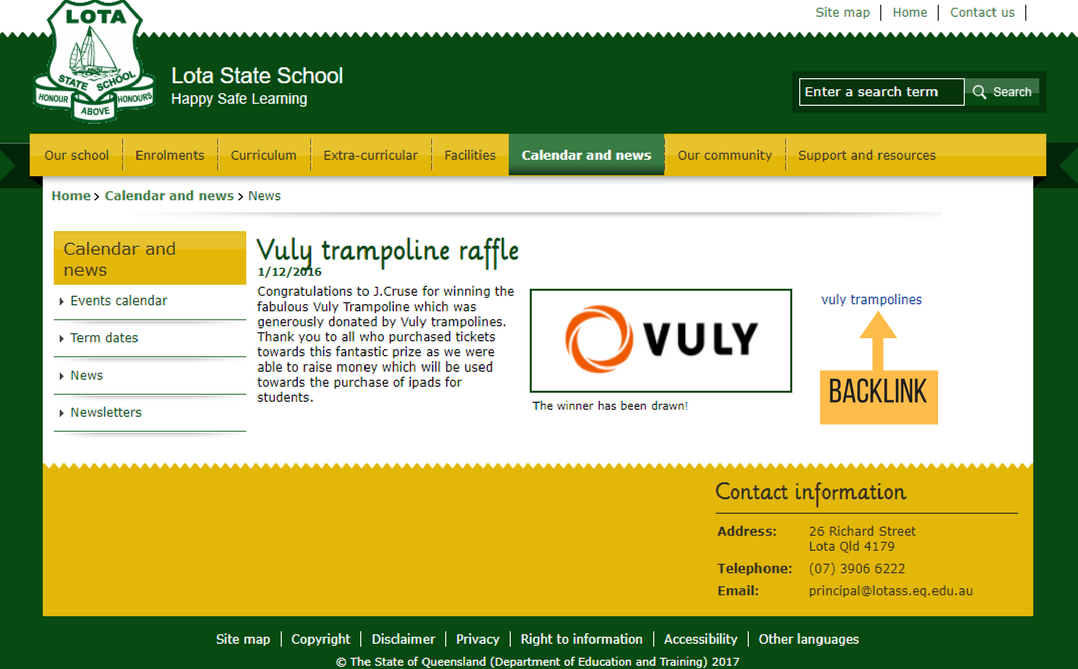
8. Networking and Building New Relationships
How is this related to link building, you may ask?
Well, at its core, link building is essentially the online version of old-fashioned networking.
It's similar to walking around a room, handing out business cards, building rapport and relationships, and hoping to one day be able to benefit from those relationships.
In the case of link building, that benefit is a link. Every link pointing back to you is like a vote of support.
Getting out there and doing some old-fashioned offline networking is still a large part of how you make relationships in business, and making relationships with people is how you secure genuine links.
See how it's all related?
So, to earn new backlinks, you can try both online and offline networking.
Online networking can occur on a social media site such as LinkedIn or even Twitter. See who's working in a similar industry or niche and send a few friendly messages.
As for offline networking, you probably already know the drill. The next time you're at a business event or conference and working your way around the room—or even meeting people in town—remember that anyone with a website could be a potential collaborator.
If you keep your online presence in mind even when you're offline, you'll be surprised by the link opportunities you find out in the real world.
This is definitely a long-term strategy that probably won't pay off for a while. You need to build a relationship with someone before you can benefit from that relationship. So, think of it as an investment—but it's an investment in so many areas of your life and work, not just your backlink profile.
Bad Backlinks
Like I said before, where there's good, there's also bad.
Don't go into link building until you have a solid understanding of what you need to be looking for.
You'll need to be cautious of the following types of backlinks. Some of them can have a pretty nasty effect on your website.
1. Paid Links
Before I get any further, let me just say: Not all paid links are bad.
There are some cases where a link for payment may be an acceptable exchange, for example, paid advertising space on a website or online publication. That kind of thing is totally fine—granted that the site is highly relevant to yours, of course.
Then there are paid directory listings (like a Yellow Pages Business Listing), which are good links in and of themselves.
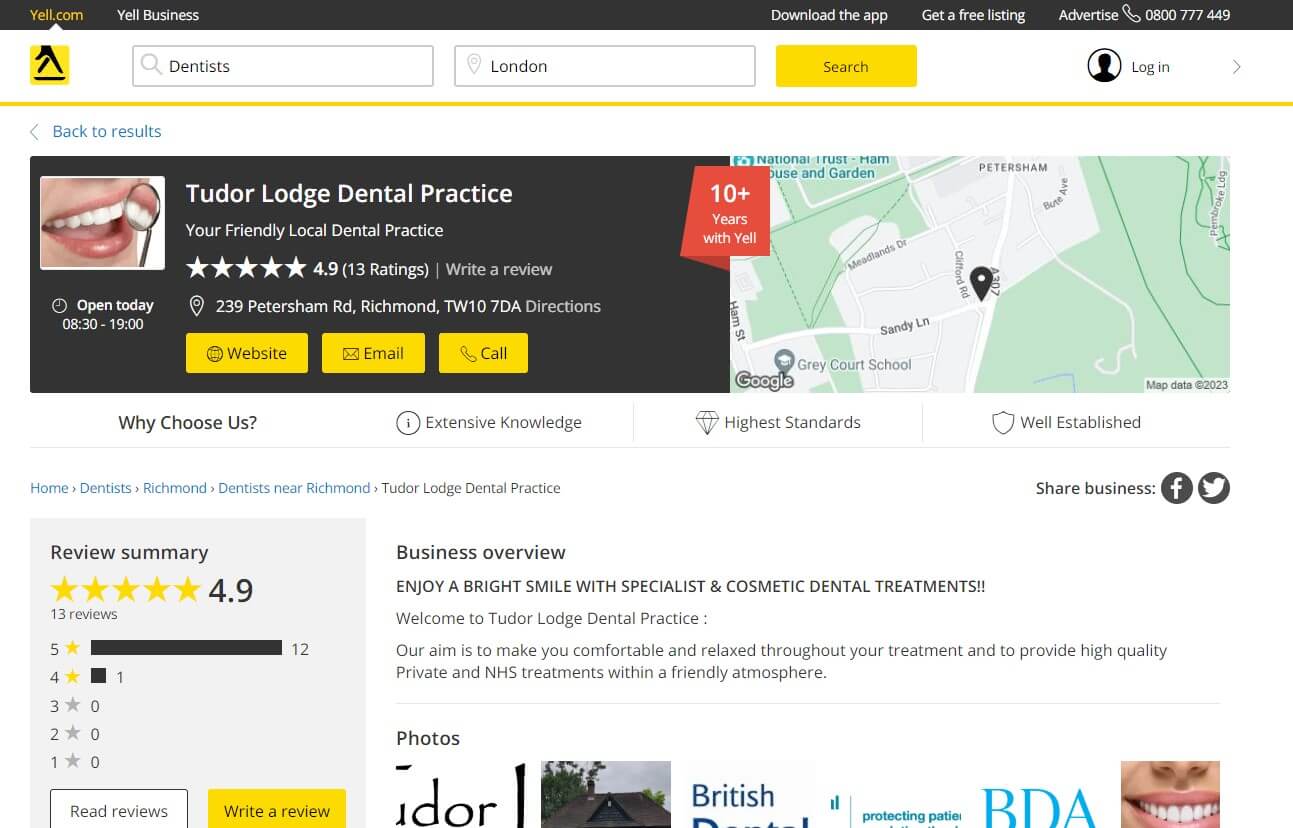
But there are also lots of low-quality directories out there which aren't much better than spam. These have the potential to lead to link farming.
Whatever you do, tread lightly around paid links. Always look upon them with caution. They certainly have the potential to work and give your website a little boost of strength. You'll just need to analyze the source (especially the domain authority) carefully to decide whether the value exchange is worth it.
When it comes down to it, Google and other search engines will always favor built links over paid links, and earned links over built links.
So, don't spend too much of your time and resources chasing paid links!
2. Hidden Links
Hidden links are a spammy, black hat SEO tactic that should be avoided at all costs—no exceptions.
If a website agrees to give you a link—whether free or paid—but will only use a hidden link, don't even go there.
Now, what exactly is a hidden link? It's any link on a website that the site owner has literally hidden from users and from Google.
Some examples include white text on a white background or black text on a black background, links hidden in small punctuation marks (like this.) and link text resized to be so small that it's practically invisible to the eye.
People do this to hide a lot of links on their website, and it's 100 percent a black hat method. If a site with a lot of hidden links is also linking to you, it could negatively affect you.
It's a violation of another one of Google's quality guidelines. That website will be penalized. As a result, their penalty will pull down the quality of your backlink profile.
3. Forum and Blog Spam
I use the word "spam" here because forums and blogs themselves can be a good way of securing backlinks.
The trick is that they need to be used very selectively and authentically.
Forums are the online way to network and build relationships. When you have an authentic presence in a forum, then people will probably appreciate a genuinely helpful link now and then.
Blogs and forums used to be very effective for linking back to your website. The problem is, though, that the method has now been almost entirely corrupted by black hat SEOs. They use blogs and forums to plant links in comments sections across the internet, regardless of subject matter or relevance to the ongoing conversation.
They bring no value to the conversation. Sometimes there's just a link and no text. Sometimes the link will be accompanied by a one-sentence comment in broken English.
I'm sure you've seen a few.
These types of backlinks must be avoided like the plague. They're extremely outdated and just plain spammy.
4. Reciprocal Links
Reciprocal links fall in the same camp as paid links—they're not necessarily bad, they just need to be approached with caution.
This is another slightly outdated SEO tactic that involves exchanging links with another website.
You'll link to them if they'll link to you.
Now, this can be used well in some circumstances, like partner or supplier relationships for example—circumstances where it would make sense to be linking to each other.
There's one problem with reciprocal links. As with forums and blogs, they've been misused to the point that Google and other search engines are now very wary of them. They're prime material for link farms, with hundreds of thousands of websites pointing to hundreds of thousands of other websites—no real relation between any of them.
In short, you're better off avoiding any reciprocal link offers unless you already have an existing relationship with the business.
Final Thoughts on Using These Backlink Examples
Moving through the link building process can seem daunting and never-ending, I know.
But, all in all, building backlinks isn't complicated.
You just need to follow a systematic process and know exactly what it is you want from every backlink.
With a solid strategy in place and a firm understanding of what you're looking for, the reward will be tenfold.
You'll see your website rise up the rankings and see an increase in traffic and in revenue—which is ultimately what everyone is trying to achieve with SEO.
Analyze each potential link carefully, make sure it's a good one that will pass value to your site and then follow a tailored outreach strategy to secure it.
And remember, you won't get every link you reach out for.
For every ten potential links that you put your time and effort into, you might get one link in return.
But this is the nature of link building.
Keep at it, focus on the wins and learn from the losses.
Soon, you'll be gaining links on a regular basis—and you'll have your very own examples of backlinks to share with the SEO world.










